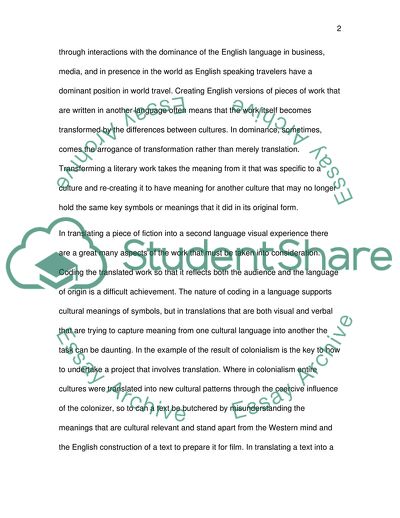Cite this document
(The Effects of the English Language and Culture in Translating a non- Essay, n.d.)
The Effects of the English Language and Culture in Translating a non- Essay. https://studentshare.org/english/1781811-a-media-production-company-is-planning-to-make-an-english-language-film-based-on-a-book-that-was-not-originally-written-in-english-drawing-particularly-on-units-20-23-discuss-the-language-related-cinsiderations-that-this-raises
The Effects of the English Language and Culture in Translating a non- Essay. https://studentshare.org/english/1781811-a-media-production-company-is-planning-to-make-an-english-language-film-based-on-a-book-that-was-not-originally-written-in-english-drawing-particularly-on-units-20-23-discuss-the-language-related-cinsiderations-that-this-raises
(The Effects of the English Language and Culture in Translating a Non- Essay)
The Effects of the English Language and Culture in Translating a Non- Essay. https://studentshare.org/english/1781811-a-media-production-company-is-planning-to-make-an-english-language-film-based-on-a-book-that-was-not-originally-written-in-english-drawing-particularly-on-units-20-23-discuss-the-language-related-cinsiderations-that-this-raises.
The Effects of the English Language and Culture in Translating a Non- Essay. https://studentshare.org/english/1781811-a-media-production-company-is-planning-to-make-an-english-language-film-based-on-a-book-that-was-not-originally-written-in-english-drawing-particularly-on-units-20-23-discuss-the-language-related-cinsiderations-that-this-raises.
“The Effects of the English Language and Culture in Translating a Non- Essay”. https://studentshare.org/english/1781811-a-media-production-company-is-planning-to-make-an-english-language-film-based-on-a-book-that-was-not-originally-written-in-english-drawing-particularly-on-units-20-23-discuss-the-language-related-cinsiderations-that-this-raises.


